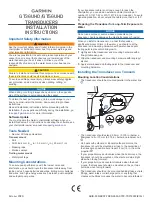
Axnes AS
Document number
Revision
Date
Page 2-1
Section 2:
Operation
The PNG system consists of one base station and one or more handheld radios (MP30). To
make all units in the PNG system interoperable, each unit must be configured with
compatible parameters. Configuration of the PNG system will imply setting of radio
frequencies, defining groups and setting scrambling and encryption parameters.
Multiple configurations may be stored on a device to support different operational modes.
The PNG system can be preconfigured from the vendor, or the configuration may be set by
the operator’s avionics department.
Ahead of flight all units in the PNG system will be set to compatible configurations. Different
types of operation may use different configurations, due to radio frequencies, group
definitions or other parameters. During operation and in flight, the configuration on the base
station is normally not changed, but may be required in some special conditions. Such
conditions may be caused by radio interference, where alternative frequency may be
required, and an alternative configuration is selected.
The operational scenario may also require different handheld configurations to be loaded in
different phases of the operation, e.g. to change group subscriptions during the mission.
Switching between the handheld configurations is done by the handheld operator by a simple
button push.
Groups
The MP30 supports organising the communication on the wireless link into groups. Groups
are a set of audio channels on the wireless link, and a set of physical audio interfaces on the
base station. The PNG system will support 2 groups depending on the available radio
resources (channel bandwidth).
The MP30 is configured to listen (receive) to one or more groups (allowing simultaneous
listening to multiple groups). Transmit is configured to one primary group through PTT/VOX,
but it is possible to configure transmit to a secondary group through configuration and use of
the secondary PTT on the MP30.
When the PNG system is set up, one or more configurations are defined, see section 2.2
Configurations.










































